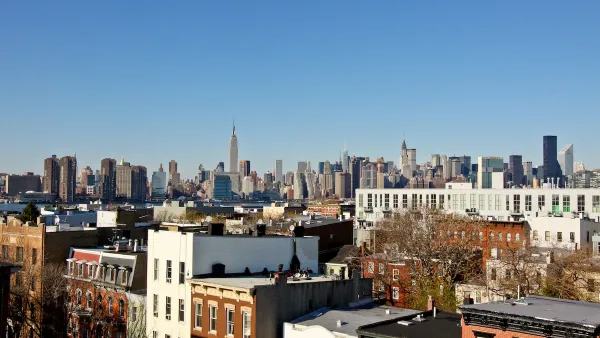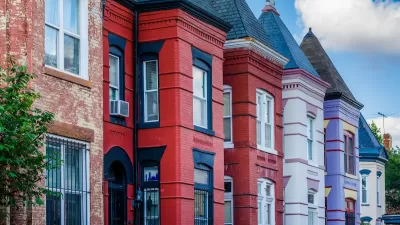How strategic land use policy decisions can alleviate the housing crisis and limit unsustainable sprawl.
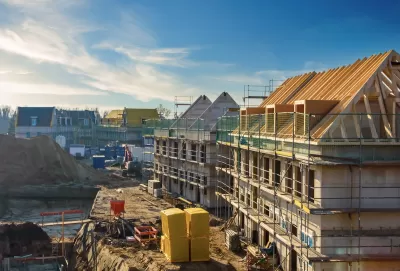
Maybe the only thing President-elect Donald Trump and Vice President Kamala Harris agreed on in the recent presidential race was that the U.S. is facing an acute housing shortage — currently estimated to be between three and six million units — and that inflexible zoning codes and excessive local regulations are chiefly to blame.
They are not alone in this assessment. Among national planning and housing groups, the American Planning Association, Smart Growth America, the National Association of Homebuilders, the Urban Institute, the Brookings Institution, and The National Low-Income Housing Coalition have all called for reforming local zoning codes to lessen the dominance of single-family housing, streamline the development approvals process, and provide additional affordable housing options.
How many new homes would zoning reform generate, and how quickly? The answer to this question is far from obvious. In most U.S. communities, zoning doesn’t directly limit the number of housing units built in a particular year. Rather, it works by regulating which housing types can be located on a given parcel. Modifying local zoning codes to enable developers to build more densely or making it easier to build “as-of-right” — without needing a variance or having to undergo an environmental review — would thus increase the number of housing units that could be built in a particular year. Or so the argument goes.
While this reasoning seems to make sense on its face, it oversimplifies the degree to which single-family and multi-family homes and neighborhoods are permanent substitutes. In fact, as repeated surveys show, most Americans would still prefer to live in a single-family home in a single-family neighborhood, something that is true regardless of whether they are Black, White or Latino, members of Generation X or Z, native-born or immigrants. Moreover, despite claims that local zoning practices have recently become more restrictive — which if true, would help explain the slowdown in new home construction — a recent national survey by researchers at the University of Illinois, The Urban Institute, and the University of Texas-Austin found local zoning practices to be little changed between 2003 and 2019. For every jurisdiction that engaged in downzoning (further reducing the densities at which new homes could be built), another jurisdiction engaged in upzoning. Although it is still early days, among the cities that have recently engaged in systematic upzoning efforts, such as Chicago, Portland, and Minneapolis, the benefits to the housing supply have so far been underwhelming.
What’s behind the housing shortage
To determine whether reforming local zoning would significantly increase new home construction, it helps to understand the local size and sources of the current housing supply shortage. According to Up for Growth, a research-advocacy group that favors building more housing, as of 2021, the nation’s cumulative housing underproduction total exceeded 3.7 million units, up from 1.7 million units in 2012. Among the states where production most lagged demand were California (with a cumulative production deficit by 2021 of 881,000 housing units), Texas (a deficit of 306,000 units), Florida (a deficit of 244,000), and New York (a deficit of 241,000).
Zoning and over-regulation are not the principal source of these deficits. Whereas housing production is significantly over-regulated in California based on the Wharton Residential Land Use Regulatory Index, it is only moderately regulated in Florida and New York and under-regulated in Texas. Indeed, as shown in Figure 1, the relationship between regulatory stringency and state-level housing production is a relatively weak one.
If over-regulation is not the principal reason developers and homebuilders haven’t built enough housing, what then is? I offer three explanations. The first is increasing concentration in the residential development and homebuilding industry. Data compiled by the Harvard Joint Center for Housing indicates that the share of new single-family homes constructed by the nation’s ten largest homebuilders increased from 19.7 percent in 2002 to 31.4 percent by 2018. Two public companies in particular, D.R. Horton and Lennar, dominate the market, ranking as the first or second largest homebuilder in a majority of the nation's 50 largest metro areas as of 2019. Other large homebuilders with dominant positions in ten or more markets include PulteGroup,
NVR, KB Home, Taylor Morrison, and Toll Brothers. Increasing concentration in any industry is rarely a good thing, but it is especially worrisome in the homebuilding business, where it discourages the day-to-day competition that drives down prices and stifles much-needed innovation. Among the factors contributing to the increase in homebuilder concentration are rising land prices and an increasingly burdensome and risky entitlements process. Both of these require builders to have access to the capital supplies that typically accompany being a publicly traded company. The fact that new home designs and materials are becoming more homogeneous nationwide is both a result and driver of increasing homebuilder concentration.
The second reason for the slowdown in new home construction is that until recently, homebuilders were building many fewer homes in advance of demand, or, as it is known in the industry, “building on spec.” This is a result of the pendulum swinging too far in the opposite direction from what occurred in the years before the Great Recession when homebuilders turned out record numbers of new housing units in response to demand inflated by speculators seeking homes to resell or rent out. These trends are shown in Figure 2, which compares annual new housing starts to average population growth between 1990 and 2020. When the market softened in 2006, homebuilders were caught with millions of unsold homes and unbuilt lots, many of which sat empty for years. The lesson builders learned from this fiasco was that it was generally safer to lag market demand than to lead it. This trend has been exacerbated by the emergence of local homebuilding oligopolies able to restrain production to push up prices.
The third and biggest reason for the slowdown in new housing construction is a shift in where young adults prefer to live. From the 1950s until the mid-1990s, the demand for new housing was overwhelmingly concentrated in the suburbs where land for housing was plentiful and inexpensive, where federally subsidized highways provided near-ubiquitous access and mobility, where government-subsidized mortgages were widely available, and where a history of exclusionary zoning regulations functioned to unjustly keep out racial minorities. Employers started following their workers to the suburbs in the late 1960s, building new office parks and pushing the demand for new homes ever further outward. For their part, suburban governments welcomed this new growth, seeing it as a ready source of tax revenues, and adopting zoning codes and subdivision ordinances intended to speed the development approvals process and facilitate new single-family home construction.
The consensus that suburban growth was universally desirable began weakening in the mid-1970s as inflation and shrinking federal subsidies meant that suburban governments had to pay an increasing share of their infrastructure and public service costs. It weakened further in the 1980s and 1990s as new rounds of low-density home construction increasingly encroached on nearby farm and resource lands. With auto ownership rising and highway construction slowing, suburban roadways eventually became as congested as their urban counterparts.
Unhappy with rising suburban land prices and worsening highway congestion, many suburban employers started expanding or relocating downtown, so much so that by the mid-1990s, downtown job growth in many metro areas was beginning to eclipse suburban job growth. With urban crime rates falling, suburban workers followed their employers back to cities, initiating a national wave of core city population growth and neighborhood gentrification. Among the nation’s 25 largest metropolitan areas, the share of overall population growth in core cities rose from 10 percent between 2000 and 2010 to 25 percent between 2010 and 2020. In the New York City, San Francisco-Oakland, Boston-Cambridge, and San Antonio metro areas, core city population growth between 2010 and 2020 exceeded suburban population growth (Figure 3). Altogether, an additional 1.3 million people moved into the nation’s 50 largest (non-suburban) cities between 2010 and 2020 compared to the prior decade.
From the macro perspectives of energy consumption, climate change mitigation, and open space preservation, building homes in urban neighborhoods is generally preferable to building them in faraway suburbs. For developers, however, the story is more complicated. Compared to the suburbs, development sites in urban neighborhoods are often more difficult to find and more expensive, while getting the necessary development approvals is also more complicated and time-consuming in cities. Even if the proper zoning is in place, housing projects proposed in cities are more likely to face opposition from neighbors and community groups than projects in suburban communities. All of this adds to the costs and risks of development, making developers wary of taking on big projects in cities unless they are subsidized or cater to the well-off. This has led to the popularization of a term that summarizes the difficulties of building mid-rise housing projects for middle-income households: the missing middle problem.
How and where to build more housing
Where does this leave us regarding ramping up new home construction? Rather than blaming a broken regulatory process, a more constructive approach is to think about ways to unplug the land-to-housing pipeline. In some communities, let’s call them Type I places, the land-to-housing pipeline is too narrow, meaning there are not enough environmentally suitable development sites available to meet projected housing demand. This will require redeveloping surplus commercial sites into housing, upgrading existing home sites with additional units, and, where appropriate, upzoning to allow for increased densities. The communities in this category are mostly in California, Florida, Arizona, Nevada, and Washington.
In other places, sufficient land may be available to accommodate demand, but the current regulatory approvals process is too inflexible or ad hoc to facilitate their timely development. The land-to-housing pipeline in these Type II communities may be wide enough, but it's as if there is a broken valve at its output end. Among states facing significant population growth pressures, California falls into this category, as do parts of Washington, Maryland, and Virginia.
Finally, there are communities in states like Texas, Georgia, North Carolina, and Tennessee that have ample land for development and a smoothly functioning regulatory process but are periodically overwhelmed by the boom-bust character of the housing market and the difficulties of reviewing dozens of projects at once with little coordination. In this last Type III case, there’s nothing wrong with the land-to-housing pipeline other than it occasionally chokes on unexpected overflows.
Let’s start with the Type I communities that are running out of easily developable land. The first place for them to look for additional housing sites is at vacant or obsolete shopping centers, many of which already have good-quality transportation access and public services. Since there is no comprehensive inventory of surplus shopping center sites, any estimate of their housing potential is necessarily guesswork. According to CoStar, a national real estate research and brokerage firm, the U.S. currently has about 57 square feet of retail space per person. Assuming 10 percent of this total to be vacant—based on the current vacancy rate for suburban malls, neighborhood shopping centers, and power centers--this adds up to 1.9 billion square feet of vacant retail space or about 42,000 acres. At an average density of 8 to 10 units per acre, that works out to between 345,000 and 430,000 additional housing units. Building at higher densities could produce even more units, and if the adjoining parking spaces are included in the calculation, the potential housing unit yield rises to well over a million.
What’s preventing more surplus shopping center sites from being converted to housing? The principal problem is that most are zoned for auto-oriented commercial uses rather than housing or mixed uses. This is easily correctable from a zoning perspective, but it would require local budget officers to adjust their short-term expectations regarding sales and property tax revenues. The other problem is that many of the current owners of these sites are either in denial about the likelihood of a retail comeback, or else are holding out for a lucrative offer from a well-heeled developer. Rather than waiting years for these properties to be sold at fire sale prices, local governments could acquire them now at slightly above current market values and then, drawing on state or federally-provided low-interest bridge loans, resell them to housing developers at slightly below market value. Neither the premiums paid to the current landowner nor the discounts offered to potential developers need to be all that large for this scheme to work, and the government bridge loans could be repaid by subsequent increases in property tax revenues.
Another untapped source of land for infill housing in Type I communities is the lots beneath existing single-family homes. Many suburban homes built during the 1940s, 1950s, and 1960s were modest one-story or ranch-style starter homes built on quarter-acre lots. These same lots today could accommodate two multi-story attached homes within a similarly-sized building footprint. To the degree there is a ceiling on the additional residential units or square footage that could be built, it often has more to do with available parking and public service capacity than with allowable lot sizes or building setbacks.
This is not to say that local government officials should pressure current owners of these properties to make them available for this type of in situ upgrading; many such homes function as a critical local source of affordable housing. At the same time, by upzoning such sites for two (or more) units while maintaining property tax assessments at current levels for a fixed period (e.g., ten years), municipalities could incentivize existing property owners to work with developers to think about appropriate upgrading possibilities.
With respect to potential zoning reforms, the principal problem in many Type I communities is not that neighborhoods are systematically under-zoned. Rather, it is that the current zoning code requires property owners or developers to obtain a variance before they can add additional dwelling units and that the current variance-granting process is so ad hoc and uncertain as to discourage such efforts. Here again, higher levels of governments could help by providing funding and technical assistance to municipalities to streamline their zoning codes in ways that minimize the need for housing-related variances that do not result in adverse community impacts.
It is worth noting that all of the approaches suggested so far rely on intergovernmental technical or funding assistance, and none involve federal or state pre-emption of local land use authority.
Creating a smarter land-to-housing pipeline
As regards Type II and Type II communities—places that have sufficient developable land to meet their housing obligations but where, for one reason or another, the local entitlement process makes gaining needed permit approvals more difficult than necessary—here, the goal should be to better align the local approvals with best-practice planning and development principles. This will ensure that adverse community or environmental impacts are addressed on a cumulative rather than project-by-project basis and that the community’s quality of life will improve as it grows.
Such efforts should be built on four principles, each intended to help communities respond to future growth and environmental challenges. The first is that new development should pay its fair share of the costs of additional public and community services but no more than its fair share. The practice of requiring new residents to pay for deferred maintenance or to mitigate pre-existing public service deficiencies should end.
A second guiding principle is that new subdivisions and multi-family projects should be organized into walkable nodes connected to each other and to local retail, school, and recreational facilities by sidewalks and pedestrian paths. Too many communities are not only inconvenient for those who prefer walking or bicycling to driving, but they are also unsafe. Toward this end, all roads in or to residential neighborhoods should be designed to prioritize pedestrian and bicyclist safety over motorized traffic flows.
A third principle infusing local plans and zoning codes is that sensitive and irreplaceable resource lands should be proactively preserved and protected. As communities throughout the country have discovered, this is best done by encouraging the local creation of public and non-profit land conservancies. Such organizations are able to work strategically and opportunistically to preserve sites of critical environmental and historical importance without becoming beholden to pro- or anti-growth interests.
Finally, wherever new development occurs, local governments should ensure adequate provisions are made for decentralized electricity generation, domestic water supplies, and stormwater management facilities keyed to local growth forecasts. Population growth in most parts of the U.S. is fairly predictable, so there is no reason why communities should fall short in terms of anticipating and planning for future energy and water consumption and waste and stormwater needs.
The best way for topline federal and state housing agencies to pursue these goals is to take a two-pronged strategy of working with relevant professional groups to develop updated standards and guidelines, and then to set aside assistance funds to support communities that follow through implementing them. In the case of urban land conservancies, the Departments of Agriculture, Housing and Urban Development, and the Interior, and the Internal Revenue Service — private land controlled by conservancies is treated differently for tax purposes — could collaborate to expand existing farmland easement and conservancy programs into urban areas. A similar cooperative approach involving the Department of Transportation could be followed in pursuit of multi-modal street and sidewalk upgrading.
If these provisions seem like common sense, it is worth noting that most housing developments built in the U.S. today do not incorporate them. The problem is not that today’s residential subdivision and apartment projects are awful; most are pretty good. Rather, it is that with a little more forward-thinking and coordination between homebuilders and local government officials, they could be so much better. Solving America’s current housing supply problems should not mean sacrificing quality for quantity. With the right government incentives, both should be readily attainable.
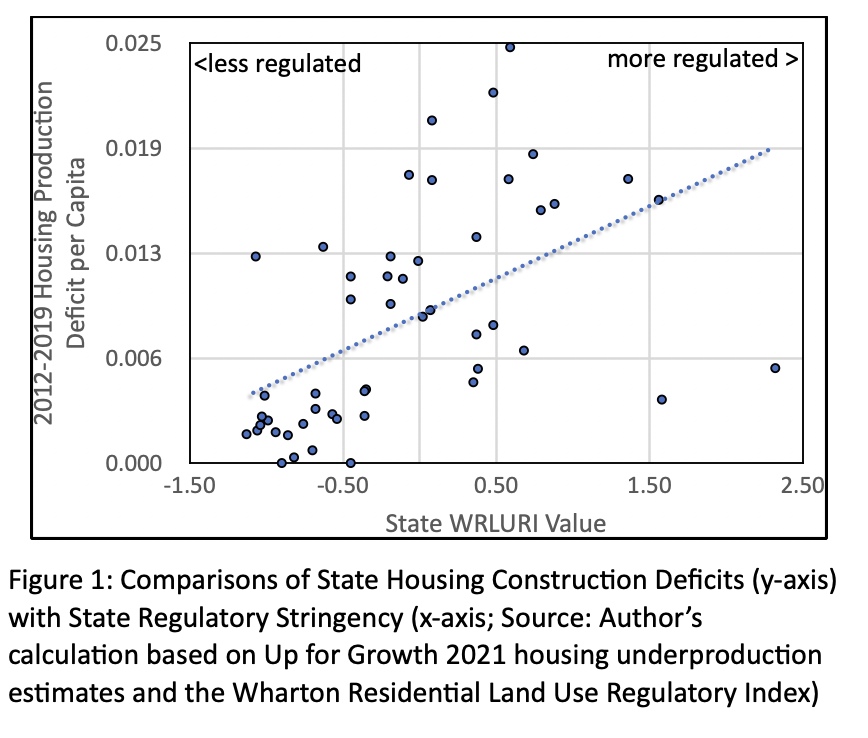
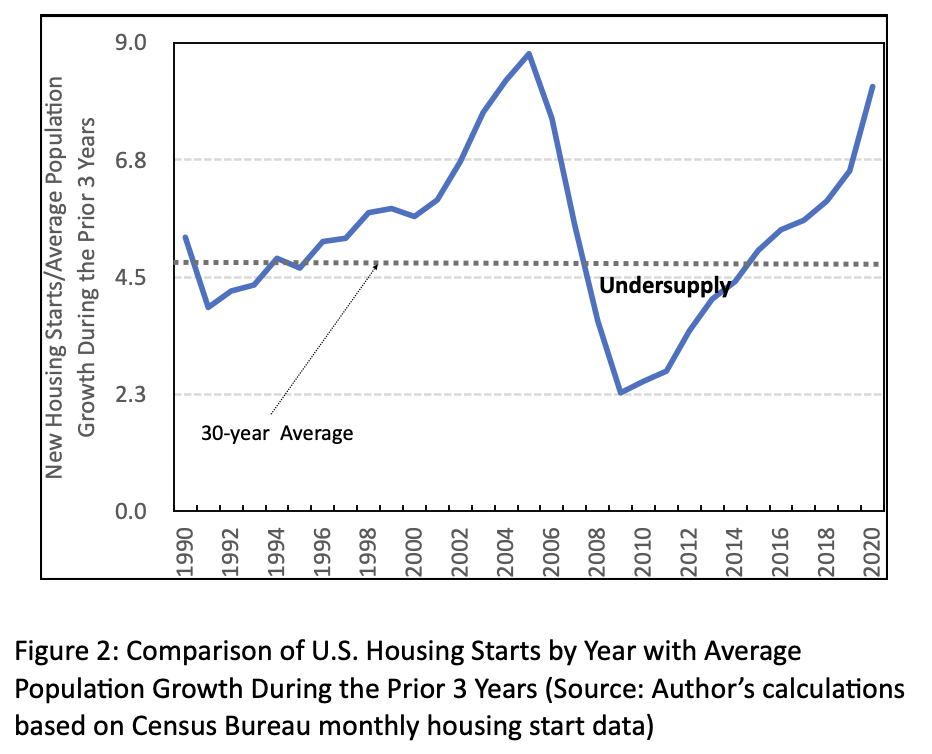
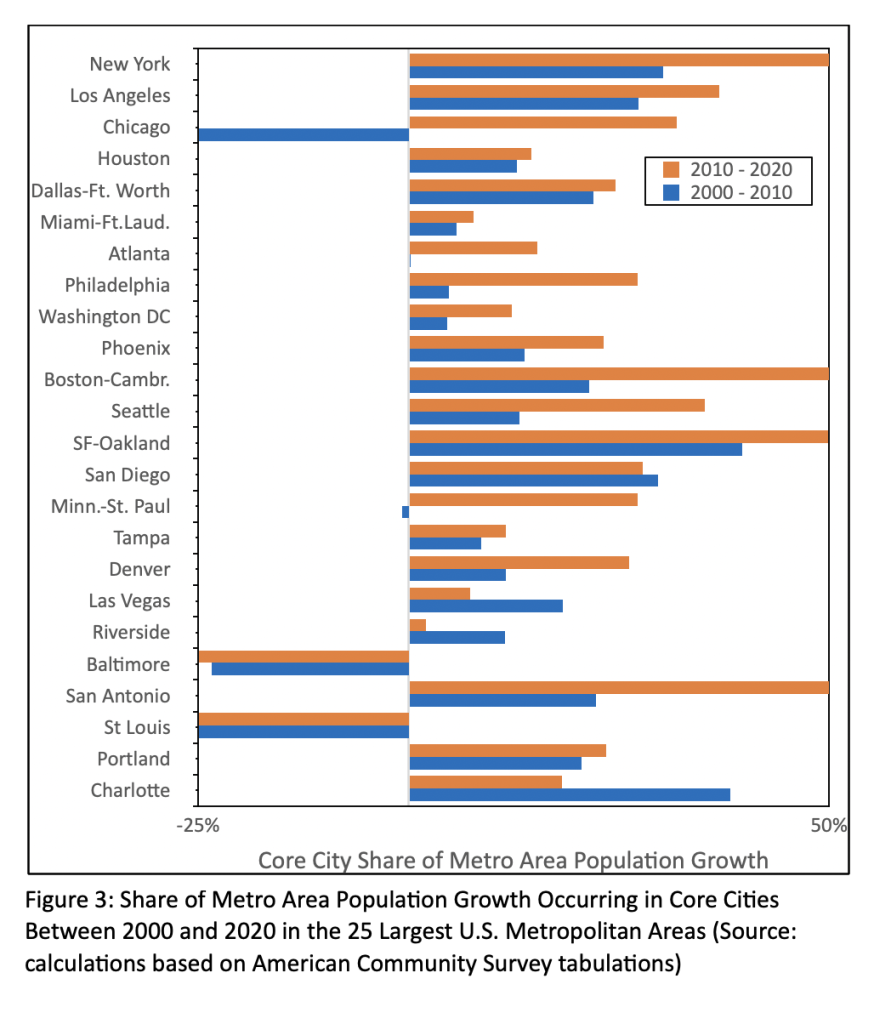
John D. Landis is Professor Emeritus of City and Regional Planning at the University of Pennsylvania with a focus on metropolitan equity, gentrification and neighborhood change, sprawl and growth management, affordable housing, and smart cities tech.

Maui's Vacation Rental Debate Turns Ugly
Verbal attacks, misinformation campaigns and fistfights plague a high-stakes debate to convert thousands of vacation rentals into long-term housing.

Planetizen Federal Action Tracker
A weekly monitor of how Trump’s orders and actions are impacting planners and planning in America.

San Francisco Suspends Traffic Calming Amidst Record Deaths
Citing “a challenging fiscal landscape,” the city will cease the program on the heels of 42 traffic deaths, including 24 pedestrians.

Defunct Pittsburgh Power Plant to Become Residential Tower
A decommissioned steam heat plant will be redeveloped into almost 100 affordable housing units.

Trump Prompts Restructuring of Transportation Research Board in “Unprecedented Overreach”
The TRB has eliminated more than half of its committees including those focused on climate, equity, and cities.

Amtrak Rolls Out New Orleans to Alabama “Mardi Gras” Train
The new service will operate morning and evening departures between Mobile and New Orleans.
Urban Design for Planners 1: Software Tools
This six-course series explores essential urban design concepts using open source software and equips planners with the tools they need to participate fully in the urban design process.
Planning for Universal Design
Learn the tools for implementing Universal Design in planning regulations.
Heyer Gruel & Associates PA
JM Goldson LLC
Custer County Colorado
City of Camden Redevelopment Agency
City of Astoria
Transportation Research & Education Center (TREC) at Portland State University
Jefferson Parish Government
Camden Redevelopment Agency
City of Claremont


























